Windows Efficiency Reservoir
Posted: April 6, 2012
Threat Metric
The following fields listed on the Threat Meter containing a specific value, are explained in detail below:
Threat Level: The threat level scale goes from 1 to 10 where 10 is the highest level of severity and 1 is the lowest level of severity. Each specific level is relative to the threat's consistent assessed behaviors collected from SpyHunter's risk assessment model.
Detection Count: The collective number of confirmed and suspected cases of a particular malware threat. The detection count is calculated from infected PCs retrieved from diagnostic and scan log reports generated by SpyHunter.
Volume Count: Similar to the detection count, the Volume Count is specifically based on the number of confirmed and suspected threats infecting systems on a daily basis. High volume counts usually represent a popular threat but may or may not have infected a large number of systems. High detection count threats could lay dormant and have a low volume count. Criteria for Volume Count is relative to a daily detection count.
Trend Path: The Trend Path, utilizing an up arrow, down arrow or equal symbol, represents the level of recent movement of a particular threat. Up arrows represent an increase, down arrows represent a decline and the equal symbol represent no change to a threat's recent movement.
% Impact (Last 7 Days): This demonstrates a 7-day period change in the frequency of a malware threat infecting PCs. The percentage impact correlates directly to the current Trend Path to determine a rise or decline in the percentage.
| Threat Level: | 10/10 |
|---|---|
| Infected PCs: | 5 |
| First Seen: | April 6, 2012 |
|---|---|
| OS(es) Affected: | Windows |
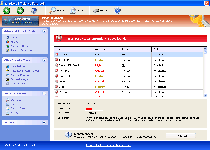 Windows Efficiency Reservoir uses a mockup of security features to convince you of its good intentions, but as a rogue anti-virus application, Windows Efficiency Reservoir is only able to display fake information and cause harm to your PC by blocking genuine security programs. Like the many identical scamware programs that came before it, Windows Efficiency Reservoir can interfere with your online web-browsing by redirecting your browser and may even block baseline Windows tools such as your Task Manager. It should go without saying that having Windows Efficiency Reservoir on your PC is a bad idea, but SpywareRemove.com malware researchers especially discourage any attempt to spend money on Windows Efficiency Reservoir, since this isn't guaranteed to stop Windows Efficiency Reservoir's attacks and will hand your financial information over to hackers who operate outside of the boundaries of common law.
Windows Efficiency Reservoir uses a mockup of security features to convince you of its good intentions, but as a rogue anti-virus application, Windows Efficiency Reservoir is only able to display fake information and cause harm to your PC by blocking genuine security programs. Like the many identical scamware programs that came before it, Windows Efficiency Reservoir can interfere with your online web-browsing by redirecting your browser and may even block baseline Windows tools such as your Task Manager. It should go without saying that having Windows Efficiency Reservoir on your PC is a bad idea, but SpywareRemove.com malware researchers especially discourage any attempt to spend money on Windows Efficiency Reservoir, since this isn't guaranteed to stop Windows Efficiency Reservoir's attacks and will hand your financial information over to hackers who operate outside of the boundaries of common law.
Windows Efficiency Reservoir: A Receptacle for Endless Streams of Fraudulent Alerts
Windows Efficiency Reservoir is from the same FakeVimes family of fake anti-virus products as Privacy Guard Pro, PrivacyGuard Pro 2.0, Extra Antivirus, Fast Antivirus 2009, Presto TuneUp, Windows Security Suite, Smart Virus Eliminator, Packed.Generic.245, Volcano Security Suite, Windows Enterprise Suite, Enterprise Suite, Additional Guard, Live PC Care, PC Live Guard, Live Enterprise Suite, Security Antivirus, My Security Wall, CleanUp Antivirus and Smart Security. Windows Efficiency Reservoir can be considered a clone of the above PC threats. Keeping common ground with the tactics of its forebear clones, Windows Efficiency Reservoir doesn't have any ability to offer you realistic or accurate security information, but SpywareRemove.com malware researchers stress Windows Efficiency Reservoir's ability to shore up that deficient with fraudulent pop-ups and system scans. Fake warnings from Windows Efficiency Reservoir typically take the form of exaggerated live attack or infection alerts.
Security information from Windows Efficiency Reservoir should always be discarded as worthless since Windows Efficiency Reservoir only pulls its alerts from pre-generated lists instead of trying to detect real dangers to your PC. While Windows Efficiency Reservoir's foremost priority is to make you panic and throw your money away on Windows Efficiency Reservoir's fake security features, SpywareRemove.com malware experts suggest that you save your money and remove Windows Efficiency Reservoir, and the attacks that come with Windows Efficiency Reservoir, with a genuine anti-malware program. However, you may wish to register Windows Efficiency Reservoir for free with the code '0W000-000B0-00T00-E0020' to reduce its attacks prior to removing Windows Efficiency Reservoir completely.
A Look at the High-Priority Risks from a Windows Efficiency Reservoir Infection
If Windows Efficiency Reservoir's attacks were confined to providing fake system information, SpywareRemove.com malware research team wouldn't rate Windows Efficiency Reservoir as being an especially dangerous PC threat. Sadly, like most of its ilk, Windows Efficiency Reservoir also feels the need to attack your PC both to control your web-browsing experiences and to prevent you from deleting Windows Efficiency Reservoir, through the attacks noted here:
- Changes to your Hosts file that redirect your browser to unusual sites, especially after you've clicked a search engine result. These browser hijacks by Windows Efficiency Reservoir may promote its own site or other types of malicious websites and can also block PC security sites.
- Windows Efficiency Reservoir will block a wide range of different security-related programs and utilities, including some other types of fake anti-virus products. Windows Efficiency Reservoir's most notable block attempt is against Task Manager, which is replaced by Windows Efficiency Reservoir's advanced process control window.
- Windows Efficiency Reservoir also reduces your browser's security by allowing it to download files with invalid security signatures without issuing any appropriate warning messages.
Technical Details
File System Modifications
Tutorials: If you wish to learn how to remove malware components manually, you can read the tutorials on how to find malware, kill unwanted processes, remove malicious DLLs and delete other harmful files. Always be sure to back up your PC before making any changes.
The following files were created in the system:%APPDATA%\Protector-yyxg.exe
File name: Protector-yyxg.exeSize: 2.06 MB (2065408 bytes)
MD5: b2cf7d149e3abf07ae50fb53fe5e435a
Detection count: 86
File type: Executable File
Mime Type: unknown/exe
Path: %APPDATA%
Group: Malware file
Last Updated: April 6, 2012
%APPDATA%\Protector-mnjj.exe
File name: Protector-mnjj.exeSize: 2.06 MB (2062336 bytes)
MD5: 118550ab131970aeb165861cc4a03911
Detection count: 57
File type: Executable File
Mime Type: unknown/exe
Path: %APPDATA%
Group: Malware file
Last Updated: April 6, 2012
%DesktopDir%\ Windows Efficiency Reservoir.lnk
File name: %DesktopDir%\ Windows Efficiency Reservoir.lnkFile type: Shortcut
Mime Type: unknown/lnk
Group: Malware file
%CommonPrograms%\ Windows Efficiency Reservoir.lnk
File name: %CommonPrograms%\ Windows Efficiency Reservoir.lnkFile type: Shortcut
Mime Type: unknown/lnk
Group: Malware file
%AppData%\npswf32.dll
File name: %AppData%\npswf32.dllFile type: Dynamic link library
Mime Type: unknown/dll
Group: Malware file
%AppData%\Inspector-[RANDOM CHARACTERS].exe
File name: %AppData%\Inspector-[RANDOM CHARACTERS].exeFile type: Executable File
Mime Type: unknown/exe
Group: Malware file
Registry Modifications
HKEY..\..\..\..{Subkeys}HKEY_CURRENT_USER\Software\Microsoft\Windows\CurrentVersion\Run "Inspector"
Additional Information
| # | Message |
|---|---|
| 1 | Error
Trojan activity detected. System data security is at risk. It is recommended to activate protection and run a full system scan. |
| 2 | Warning
Firewall has blocked a program from accessing the Internet C:\program files\internet explorer\iexplore.exe is suspected to have infected your PC. This type of virus intercepts entered data and transmits them to a remote server. |
| 3 | Warning! Identity theft attempt Detected
Hidden connection IP: 58.82.12.124 Target: Your passwords for sites |
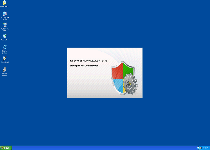
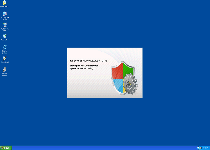
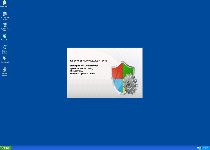
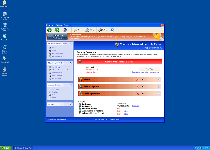
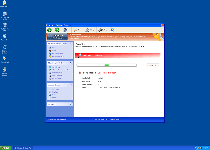
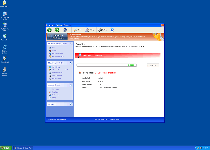
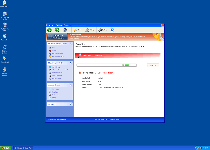
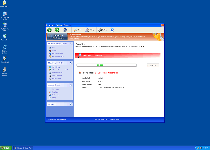
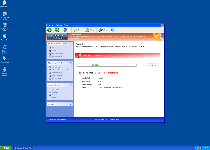
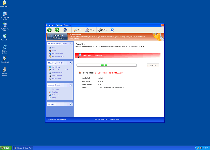
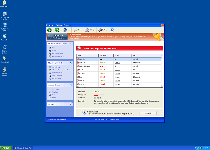
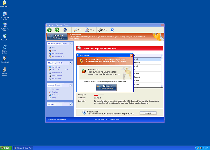
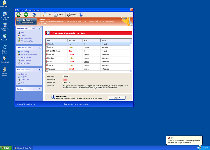
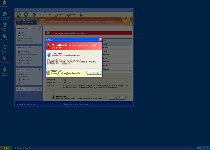
Leave a Reply
Please note that we are not able to assist with billing and support issues regarding SpyHunter or other products. If you're having issues with SpyHunter, please get in touch with SpyHunter customer support through your SpyHunter . If you have SpyHunter billing questions, we recommend you check the Billing FAQ. For general suggestions or feedback, contact us.